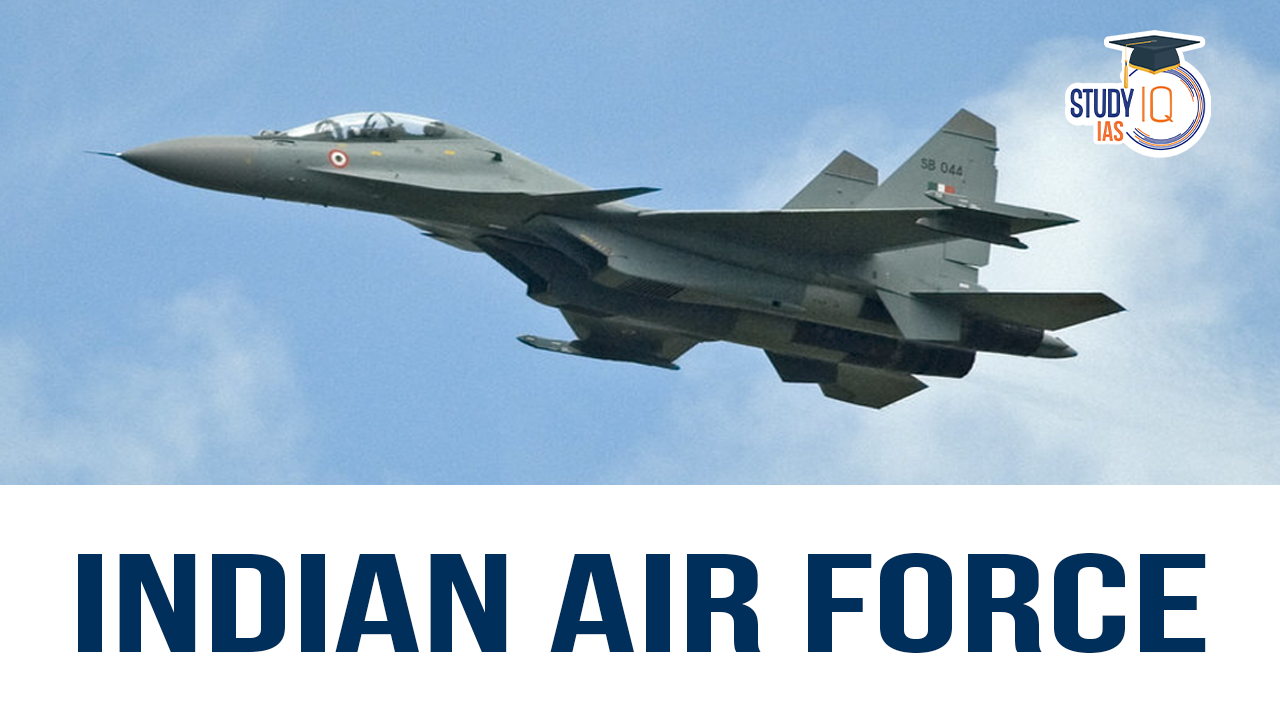Table of Contents
During the 92nd Raising Day of the Indian Air Force, the Chief of Air Staff emphasised that the global security landscape is continuously changing, and the ongoing conflicts underscore the critical necessity for a robust and capable Air Force.
| Glimpse of 92nd Anniversary of Indian Air Force |
|
Indian Air Force
- Established on: October 8, 1932.
- Its initial role was to support the Royal Air Force (RAF) of the United Kingdom in its fight against Japan in World War II. The IAF was instrumental in halting the advance of the Japanese army into India by targeting their bases in Burma.
- The first airstrike by the IAF occurred in Arakan, followed by missions against Japanese air bases in northern Thailand.
- In recognition of its service, King George VI conferred the prefix “Royal” in 1945, making it the Royal Indian Air Force (RIAF).
- After India became a republic in 1950, the prefix was dropped and renamed as the Indian Air Force.
- The IAF has since evolved into a modern air force, adapting to contemporary warfare and enhancing its operational capabilities.
- Motto of IAF: “Touch the sky with Glory” (Nabhah Sparsam Diptam) – taken from the 11th chapter of the Bhagavad Gita.
Recent Relief Operations by IAF
- Teesta River Flash Floods, 2023: It has caused devastation in Sikkim and West Bengal.
- The IAF deployed Chinook and Mi-17-1V helicopters for rescue and relief operations, evacuating over 1,700 people, including foreign nationals.
- Silkyara Tunnel Collapse, 2023: In response to the collapse in Uttarakhand, the IAF used C-17 Globemaster, C-130J Hercules, and Chinook helicopters for evacuation and equipment transport.
- Nepal Earthquake Relief, 2023: The IAF provided humanitarian aid, transporting essential supplies and personnel.
- Israel-Hamas Conflict Relief: In October and November 2023, the IAF delivered 70 tonnes of humanitarian aid to Egypt’s El-Arish airbase near the Gaza border.
Bilateral and Multilateral Exercises
- International Exercises:
- The IAF participated in Red Flag (USA), Eastern Bridge (Oman), Pitch Black (Australia), Udara Shakti (Malaysia), Garuda (France), and Desert Knight (UAE).
- These exercises enhanced the IAF’s global standing and demonstrated India’s growing influence in global airpower.
- Exercise Vayushakti: Held on February 17, 2024, at Pokhran, it demonstrated the IAF’s offensive capability with live firing exercises.
- Exercise Gagan Shakti 2024: Commenced on April 1, 2024, simulating two-front threats.
- Exercise Tarang Shakti 2024: The largest multilateral exercise conducted by the IAF in 2024, with 11 countries participating and 27 countries observing.
| Indian Air and Space Force (IASF) |
|
Challenges Associated with IAF in Recent Years
- Depletion of Fighter Squadrons: The IAF currently operates only 30 fighter squadrons, significantly below the authorised 42 needed to counter threats from China and Pakistan.
- This shortfall is particularly concerning given China’s military buildup along the border, which includes advanced aircraft and drones
- Technological Lag Behind China: The IAF has acknowledged falling behind China’s advancements in technology and defence production rates, particularly in the aerospace sector.
- China’s 5th-generation fighter jets, like the J-20, and its advanced airborne warning and control systems (AWACS) and long-range missiles pose significant challenges to the IAF.
- Slow Modernisation: Despite some progress, the modernization of the IAF has been uneven.
- While sectors like helicopter capabilities have advanced, the development of fifth-generation fighter aircraft has lagged.
- The LCA Mk1A, while promising, is still not on par with China’s capabilities and remains years away from full operational readiness.
- Supply Chain Issues: The reliance on foreign suppliers for spare parts, particularly for Russian-origin aircraft, poses a significant challenge, especially amid geopolitical tensions affecting supply lines.
- Indigenous Production Challenges: Indigenous projects, like the LCA Tejas and Advanced Medium Combat Aircraft (AMCA), have faced delays, making it challenging to reduce reliance on foreign suppliers.
The Road Ahead for the Indian Air Force (IAF)
- Commitment to Modernisation: Despite existing challenges, the IAF is dedicated to its modernization objectives, which include the induction of new aircraft, helicopters, and air defence systems.
- These modernization efforts are expected to enhance India’s air power significantly over the next decade.
- Addressing the Gap with China: Closing the technological and operational gap with China requires a coordinated effort from both the government and the defence industry.
- Essential Investments:
- Increased investment in research and development is crucial.
- Faster production cycles are necessary to keep up with demands.
- Greater involvement of the private sector is essential for bolstering capabilities.
- Long Path to Self-Reliance: The journey towards achieving a fully self-reliant and technologically advanced air force is extensive but achievable with appropriate policies and focus.
- Future Readiness: With the right strategies, the IAF is positioned to meet future demands effectively.


 Places in News for UPSC 2025 for Prelims...
Places in News for UPSC 2025 for Prelims...
 New Phase of Operation Chakra to Combat ...
New Phase of Operation Chakra to Combat ...
 Soyuz Aircraft: History, Design and Sign...
Soyuz Aircraft: History, Design and Sign...





















